#osirisrex
Text
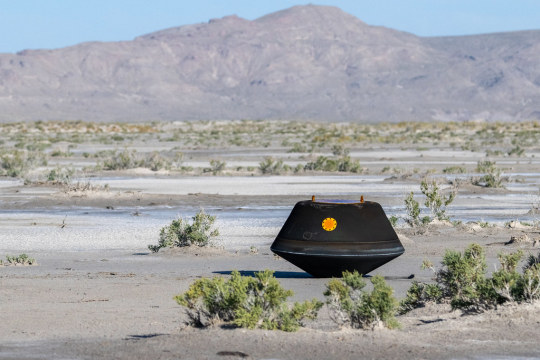
#IFTTT#Flickr#nasa#marshallspaceflightcenter#msfc#goddardspaceflightcenter#gsfc#osirisrex#asteroid#regolith#bennu#newfrontiers#originsspectralinterpretationresourceidentificationsecurityregolithexplorer#asteroidsamplereturn#originsspectralinterpretationresourceidentificationsecurity#utah#utahtestandtrainingrange#dugway#ut#originsspectralinterpretationresourceidentificationsecurityregolithexplorerosirisrex
19 notes
·
View notes
Text
youtube
2 notes
·
View notes
Text
Join us as we unveil NASA's groundbreaking discovery of an asteroid sample that could rewrite the history of our origins. Explore the hidden treasures from Bennu, a 4.5-billion-year-old time capsule, rich in carbon and water-laden minerals. Discover how this revelation may hold the key to the origins of life on Earth and our cosmic heritage. Don't miss this extraordinary journey of scientific exploration.

#NASA#AsteroidDiscovery#Bennu#SpaceMysteries#OriginsOfLife#CosmicHeritage#SpaceExploration#ScienceWonders#NASARevelation#Astronomy#SpaceSamples#CarbonRichAsteroid#WaterOnAsteroids#OsirisRex#ExtraterrestrialOrigins
0 notes
Text

Contrairement à l’#astéroïde qui avait causé la disparition des dinosaures il y a 66 millions d’années, les 100 grammes d’échantillons de l’Astroïde #Bennu ramené sur #Terre par la #NASA ne provoquera pas d’extinction de masse.
L'article sur bit.ly/3BpAdZO
#OSIRISREx#mission#espace#astronomie#conquêtespatiale#bennu#astéroidebennu#fusée#NASA#humour#rire#drôle#fucknews
0 notes
Text
youtube
NASA's OSIRIS-REx spacecraft adjusts course to get closer to Earth
On July 26, NASA's OSIRIS-REx spacecraft fired its engines for about 63 seconds to slightly thrust itself onto a course closer to Earth
Preliminary tracking data indicates OSIRIS-REx changed its velocity, which includes speed and direction, by 1.3 miles, or 2 kilometers, per hour. It's a tiny but critical shift; without course adjustments like this one the spacecraft would not get close enough to Earth on Sept. 24 to drop off its sample of asteroid Bennu.
The spacecraft is currently 24 million miles, or 38.6 million kilometers, from Earth, traveling at about 22,000 miles, or about 35,000 kilometers, per hour.
Over the next few days, engineers will use data collected before and after today's engine burn, including Doppler radar data, to make sure the maneuver executed as planned and the spacecraft is on the right path.
Today's trajectory correction maneuver is the final adjustment needed to set up OSIRIS-REx to return to Earth on Sept. 24. Two more maneuvers, on Sept. 10 and 17, will target the precise point in Earth's atmosphere where the spacecraft's sample-return capsule must enter to land on target at the Department of Defense's Utah Test and Training Range near Salt Lake City.
0 notes
Text
After a journey of nearly 3.9 billion miles, the OSIRISREx asteroid sample return capsule is back on Earth. Teams perform the initial safety assessment—the first persons to come into contact with this hardware since it was on the other side of the solar system.
📽: NASA
14 notes
·
View notes
Text
Filma NASA a través de nave Osiris-REx cápsula de retorno con muestras de asteroide Bennu
La cápsula de retorno de la nave OSIRIS-REx de la @NASA llegó a la Tierra de forma controlada con 250 gramos de muestras de polvo y roca del asteroide Bennu fue filmada por la misión #OSIRISREx.
Agencias/Ciudad de México.- La nave OSIRIS-REx de la NASA tomó unas vistas finales de su propia cápsula de retorno de muestras del asteroide Bennu, que expulsó camino de la Tierra.
Las imágenes muestran la cápsula con forma vaga de muffin, con una base de color marrón cobrizo y una parte superior blanquecina, contra el fondo negro del espacio.
Una imagen de la cápsula de retorno de muestras…

View On WordPress
0 notes
Text
Brett Tingley - NASA's OSIRIS-REx lands samples of asteroid Bennu to Earth after historic 4-billion-mile journey:
OSIRISREx #NASA #SampleReturn #Asteroid #Bennu #SpaceExploration #Astronomy
0 notes
Text
Every day is Asteroid Day at NASA
It’s International Asteroid Day, and today we’re talking about everything asteroids! Although there are no known threats for the next 100 years, our Planetary Defense experts are constantly finding, tracking, and monitoring near-Earth objects to protect our home planet.
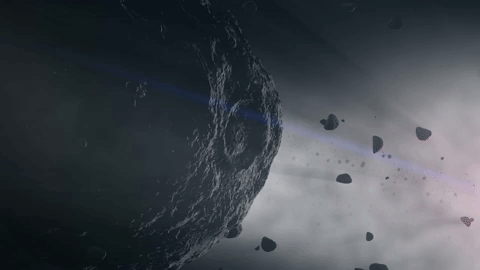
Asteroids are rocky remnants from the beginning of our solar system, and as of today, 26,110 near-Earth asteroids have been discovered!

So how do we spot these near-Earth objects? Let’s watch and see:
youtube
In addition to tracking and monitoring asteroids, we are also launching several missions to study these rocky relics. By studying asteroids, we can better understand the formation of our solar system. Here are some exciting missions you can look forward to:
OSIRIS-REx: Returning a Sample from Asteroid Bennu
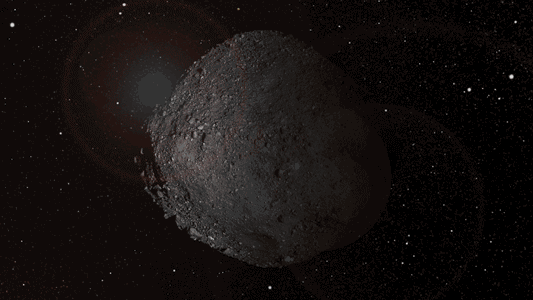
Last year, our OSIRIS-REx mission successfully captured a sample of asteroid Bennu, a 4.5-billion-year-old asteroid the size of the empire state building.
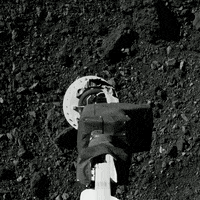
Currently, OSISRIS-REx is making its long journey home carrying this sample as it returns to Earth in 2023.
Psyche: A Journey to a Metal World
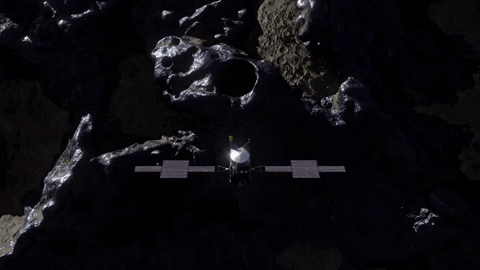
Our Psyche mission will journey to a unique metal asteroid orbiting the Sun between Jupiter and Mars.

What makes the asteroid Psyche unique is that it appears to be the exposed nickel-iron core of an early planet, one of the building blocks of our solar system. Deep within rocky, terrestrial planets - including Earth - scientists infer the presence of metallic cores, but these lie unreachably far below the planets' rocky mantles and crusts. Because we cannot see or measure Earth's core directly, Psyche offers a unique window into the violent history of collisions and accretion that created terrestrial planets.
Lucy: Studying the Trojan Asteroids
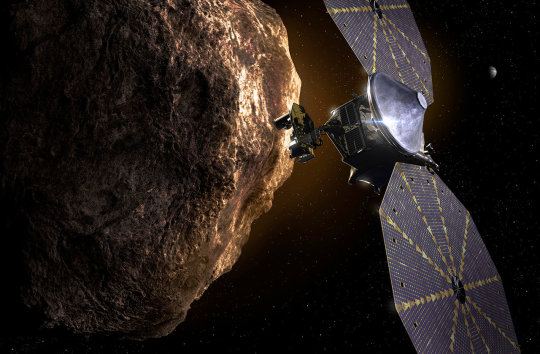
Launching this year, our Lucy mission will be the first mission to study the Trojans, a group of asteroids that share Jupiter’s orbit around the Sun. Time capsules from the birth of our Solar System more than 4 billion years ago, the swarms of Trojan asteroids associated with Jupiter are thought to be remnants of the primordial material that formed the outer planets.

The mission takes its name from the fossilized human ancestor (called “Lucy” by her discoverers) whose skeleton provided unique insight into humanity's evolution. Likewise, the Lucy mission will revolutionize our knowledge of planetary origins and the formation of the solar system.
DART: Double Asteroid Redirection Test

Launching this year, our DART mission is a planetary defense driven test of technologies and will be the first demonstration of a technique to change the motion of an asteroid in space.
The destination of this mission is the small asteroid Dimorphos, which orbits slowly around its larger companion Didymos. Dimorphos is referred to as a moonlet since it orbits a larger asteroid.
The DART spacecraft will achieve the kinetic impact deflection by deliberately crashing itself into the moonlet. The collision will change the speed of the moonlet in its orbit around the main body by a fraction of one percent, but this will change the orbital period of the moonlet by several minutes - enough to be observed and measured using telescopes on Earth.
At NASA, every day is asteroid day, as we have missions exploring these time capsules of our solar system and surveying the sky daily to find potential hazards. We, along with our partners are watching the skies 24/7/365, so rest assured! We're always looking up.
Make sure to follow us on Tumblr for your regular dose of space!
#AsteroidDay#PlanetaryDefense#MissionToPsyche#LucyMission#DARTMission#OSIRISREx#ToBennuAndBack#space#solarsystem#science#asteroid#technology#Earth
2K notes
·
View notes
Link
Two days after touching down on asteroid Bennu, NASA’s OSIRIS-REx mission team received on Thursday, Oct. 22, images that confirm the spacecraft has collected more than enough material to meet one of its main mission requirements.
1 note
·
View note
Photo

Close view of the asteroid Bennu by OSIRIS-REx space probe 👏👏 Latest news from this mission : https://www.fromspacewithlove.com/osiris-rex-bennu/
❤️ @fromspacewithlove
📸 NASA/Goddard/University of Arizona
8 notes
·
View notes
Video
OSIRIS-REx’in ASTEROİD BENNU’YA DOKUNACAĞI YERLER
Asteroid Bennu’dan bir yüzey örneği almak için en uygun yer neresidir? NASA’nın 2016’da fırlatılan robotik OSIRIS-REx uzay aracı, 500 metre genişlikteki asteroid 101955 Bennu’yu incelemek üzere gönderildi. OSIRIS-REx Dünya’ya yakın asteroidin koyu renkli yüzeyini haritaladıktan sonra Ağustos 2020’de, yüzey örneği almak için Bennu’nun yüzeyine temas edecek. 23 saniyelik bu hızlandırılmış video, NASA’nın daha bu ayın başlarında seçtiklerinden temas için aday dört yeri gösteriyor. NASA Bennu’nun kuzey yarım küresi yakınlarındaki Nightingale’i, nispeten düz olması, kaya bulunmaması ve ince taneli kumların belirgin bolluğu nedeniyle birincil iniş noktası olarak belirledi. Yedekte ise Osprey bölgesi bulunuyor. NASA Bennu’dan alınan toprak örneklerini detaylı analiz için 2023’te Dünya’ya geri getirmeyi planlıyor.
Video: NASA, GSFC, U. Arizona, SVS, OSIRIS-REx
#APOD#NASA#sky#space#science#repost#gökyüzü#astronomi#uzay#bilim#uzaydanhaberler#asteroid#bennu#OSIRISRex
1 note
·
View note
Text
Join us on an incredible space journey with OSIRIS-REx, the daring spacecraft that embarked on a mission like no other. Launched in 2016, it journeyed billions of miles to reach asteroid Bennu, a rugged space rock. In 2020, OSIRIS-REx successfully collected an 8.8-ounce sample from Bennu, marking a historic achievement.
Now, this precious sample has returned to Earth, and scientists are preparing to unlock the secrets it holds about our solar system's origins. Discover how this mission isn't just about Bennu but about understanding our entire cosmic past.
Stay tuned for updates on OSIRIS-APEX, the next chapter in this cosmic adventure, as we continue to explore the mysteries of the universe one sample at a time.
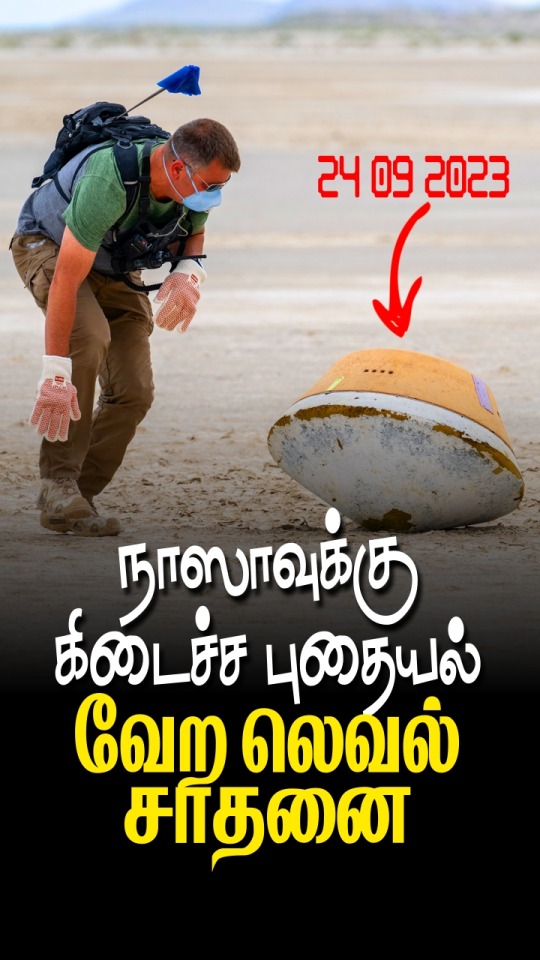
#SpaceExploration#OSIRISREx#AsteroidBennu#CosmicOrigins#ScienceDiscovery#youtube#isro#chandrayaan3#adityal1#space exploration#moon#space mission#space science
0 notes
Photo
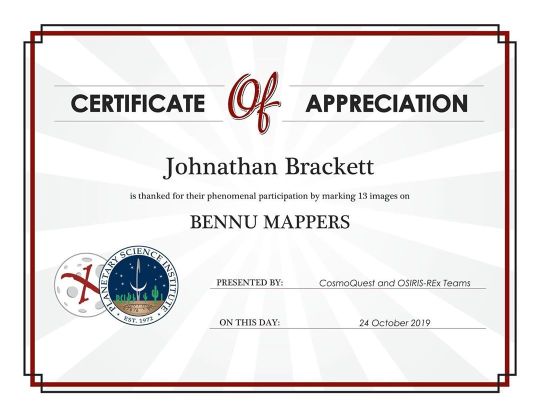
Had fun marking every single crater, boulder, and rock in images taken as part of the OSIRIS-REx Mission. Can’t wait for a sample of Bennu to be headed to Earth soon. #bennu #osirisrex #space #asteroid #nasa https://www.instagram.com/p/B4L43ncHzWk/?igshid=1y15577s74bmf
1 note
·
View note
Photo

NASA’s #OSIRISREx spacecraft has started its ”Baseball Diamond Phase” taking detailed surveys of #Asteroid Bennu - https://www.asteroidmission.org/detailed-survey-bbd/
2 notes
·
View notes